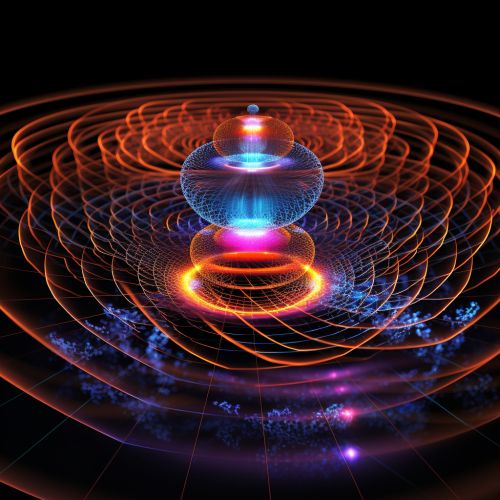Quantum Superposition Principle
Introduction
Quantum superposition is a fundamental principle in quantum mechanics that holds that any two (or more) quantum states can be added together, or "superposed", and the result will be another valid quantum state. This principle is at the heart of quantum mechanics and distinguishes it from classical physics.


Concept and Definition
The concept of superposition arises from the wave-like nature of quantum entities. According to the wave-particle duality, all quantum entities exhibit both particle and wave characteristics. When these entities are in a superposition of states, they exist in multiple states simultaneously, much like a wave can exist in multiple places at the same time.
The principle of superposition is mathematically defined using the language of Hilbert spaces and linear algebra. In this formalism, the states of a quantum system are represented by vectors in a Hilbert space, and the superposition of states is represented by the linear combination of these vectors.
Quantum State and Superposition
A quantum state is a mathematical entity that fully describes a quantum system. In the formalism of quantum mechanics, a quantum state is represented by a vector in a Hilbert space. The principle of superposition states that if a system is in state |A⟩ and state |B⟩, it can also be in a state |ψ⟩, which is a linear combination of |A⟩ and |B⟩. Mathematically, this is expressed as:
|ψ⟩ = a|A⟩ + b|B⟩
where a and b are complex numbers.
Measurement in Quantum Superposition
One of the most intriguing aspects of quantum superposition is its implications for measurement. According to the Copenhagen interpretation of quantum mechanics, when a measurement is made on a system that is in a superposition of states, the system will "collapse" into one of the states in the superposition. This is known as wave function collapse.
The probability of the system collapsing into a particular state is given by the square of the coefficient of that state in the superposition. For example, if a system is in a superposition of states |A⟩ and |B⟩ with coefficients a and b respectively, the probability of the system collapsing into state |A⟩ upon measurement is |a|^2, and the probability of collapsing into state |B⟩ is |b|^2.
Quantum Superposition and Entanglement
Quantum superposition is closely related to another fundamental concept in quantum mechanics: quantum entanglement. When two quantum systems become entangled, the state of one system becomes dependent on the state of the other, no matter how far apart they are. This is a direct result of the principle of superposition.
Applications
The principle of quantum superposition has many applications in quantum physics and technology. It is the basis for quantum computing, where quantum bits, or qubits, can exist in a superposition of states, allowing for massively parallel computation. It also plays a crucial role in quantum cryptography, where the superposition of states is used to create unbreakable encryption.
